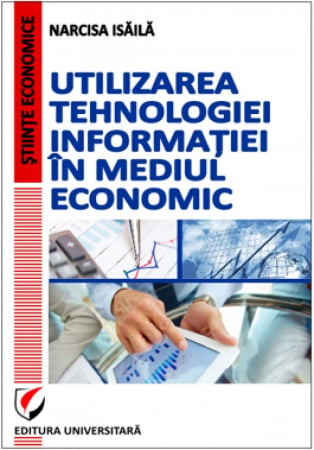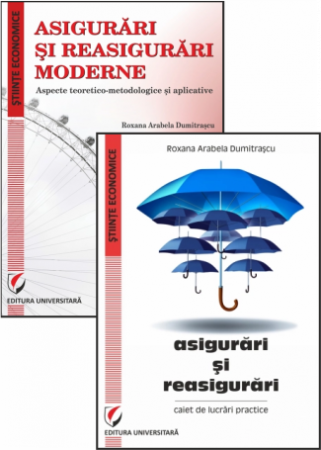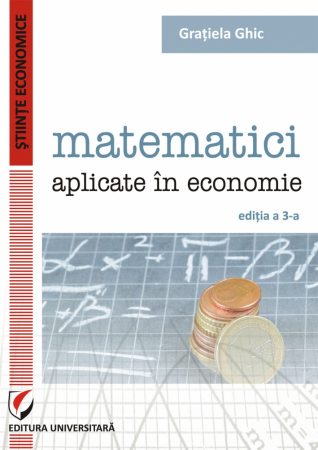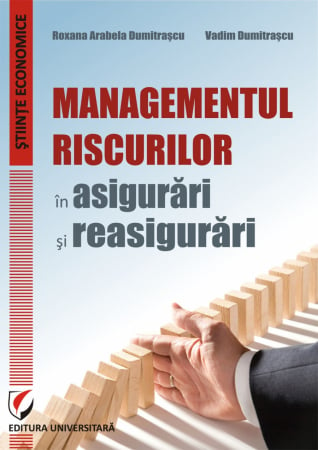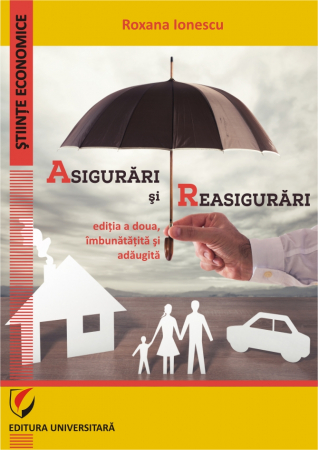Manuscript proposals: [email protected] / 0745 204 115 //// Tracking orders Individuals / Sales: 0745 200 357 / Orders Legal entities: 0721 722 783
Publisher: Editura Universitară
Author: Andrei Bădin L.
ISBN: 978-606-28-1285-0
DOI: https://doi.org/10.5682/9786062812850
Publisher year: 2021
Edition: I
Pages: 224
Product Code:
9786062812850
Do you need help?
0745 200 357
- Description
- Authors
- Content
- More details
- Reviews (0)
Cultural marketing, a field in full expansion in the context of the development of the creative industry, has at its disposal, through this thesis, important theoretical and practical scientific resources, which fill the knowledge gaps in this sector and contribute to identifying a specific and adapted work tool. The paper provides researchers with a critical review of the literature and a rigorous theoretical framework of the studied sector, based on similarities that include the broader field of sectoral marketing of services, and the features that ensure its own identity. Three types of complex research (exploratory, qualitative and quantitative), allowed the identification of operators in the performing arts sector in Bucharest and the evaluation of how they use the elements of the marketing mix in dialogue with the target segments to which they are addressed. The results of these studies, validated by multiple scientific methods, were the basis for a conceptual research model, which allows the evaluation of elements dominated by subjective variables, namely consumer satisfaction, and factors influencing the perception of service quality. The thesis proposes a structured guide of practices, addressed to marketing professionals, provides data on the categories of public interested in consuming cultural products, explores their motivations and preferences and allows, indirectly, a look at the level of professionalism of the guild in the most important center. economic and cultural development of the country. The results of this research are relevant for the development of sectoral marketing and for building the identity of a field associated until recently with the marketing of sports services. These results appear at an opportune moment, on the one hand because there is no constant preoccupation in the academic environment for exploring the creative industries sector, but, especially, because they represent an important reference point in a period that announces transformations. substantial of the sector, appeared under the pressure of some positive and negative external factors, from the technological development to the new practice exercises imposed by the pandemic and recession.
ANDREI L. BADIN
FOREWORD / 5
ABSTRACT / 7
SUMMARY / 8
TABLE OF CONTENTS / 9
INTRODUCTION / 11
PART I. CULTURAL INDUSTRY AND ITS PARTICULARITIES - Performing Arts / 25
1. MARKETING OF SERVICES - THEORETICAL BOUNDARIES / 27
1.1. DEFINITION OF MARKETING - BETWEEN SCIENCE AND ART / 27
1.2. MARKETING OF SERVICES - A CHRONOLOGICAL PRESENTATION / 29
1.2.1. History of service marketing / 31
1.2.2. The concept of services / 40
1.2.3. Characteristics of the services / 43
1.2.4. Typology of services / 52
1.3. CULTURAL MARKETING / 62
1.4. CONCLUSIONS / 69
2. MARKETING OF CULTURAL SERVICES / 71
2.1. PRESENTATION OF THE CREATIVE INDUSTRY / 71
2.1.1. Positioning the cultural industry within the creative industry / 72
2.1.2. Creative economy / 74
2.2. FIELD OF CULTURAL SERVICES / 77
2.2.1. Cultural industry - services, goods and economy / 77
2.3. COMPONENTS AND CLASSIFICATION OF CULTURAL SERVICES / 81
2.3.1. Cultural sector / 83
2.4. CULTURAL SERVICES MARKET / 84
2.4.1. Trade in the cultural sector / 85
2.4.2. Cultural industry in Romania / 87
2.4.2.1. Sectoral strategy in the field of culture - Romania / 88
2.5. CULTURAL SERVICE CONSUMER BEHAVIOR / 90
2.5.1. Experience marketing / 93
2.5.2. The implications of marketing in the performing arts / 94
2.5.3. Consumer satisfaction of cultural services / 96
2.5.3.1. Relational marketing / 98
2.5.4. Loyalty of the consumer of cultural services / 99
2.5.5. Consumer expectations of shows - a fundamental element for understanding post-purchase behavior / 102
2.6. PERFORMANCE ART - ANALYSIS / 105
2.6.1. Analysis of the European Union / 105
2.6.2. Analysis Romania / 106
3. MARKETING STRATEGIES IN CULTURAL SERVICES / 112
3.1. MARKETING STRATEGY / 113
3.1.2. Characteristics of the services / 114
3.1.3. Marketing mix / 116
3.1.4. Cultural marketing, strategy and marketing mix / 118
3.1.5. The evolution of cultural marketing / 119
3.1.6. The marketing mix in cultural services - performing arts / 119
3.2. PRODUCT POLICY / 121
3.3. PRICE POLICY / 125
3.4. DISTRIBUTION POLICY / 127
3.5. PROMOTION POLICY / 128
3.6. PERSONNEL POLICY / 132
PART II. PRESENTATION OF THE CURRENT SITUATION OF CULTURAL SERVICES / 135
4. BUCHAREST SHOW MARKET / 137
4.1. PRESENTATION OF THE PERFORMANCE MARKET IN BUCHAREST / 138
4.2. CONCLUSIONS / 162
5. PRESENTATION OF THE USE OF THE MARKETING MIX BY CULTURAL ENTITIES - SHOW TYPE SERVICES / 165
5.1. PRESENTATION OF THE USE OF THE MARKETING MIX / 168
5.2. CONCLUSIONS / 195
6. PERCEPTION AND SATISFACTION OF CONSUMERS OF SHOWS IN BUCHAREST / 199
7. CONCLUSIONS AND PROPOSALS / 204
BIBLIOGRAPHY / 213
ABSTRACT / 7
SUMMARY / 8
TABLE OF CONTENTS / 9
INTRODUCTION / 11
PART I. CULTURAL INDUSTRY AND ITS PARTICULARITIES - Performing Arts / 25
1. MARKETING OF SERVICES - THEORETICAL BOUNDARIES / 27
1.1. DEFINITION OF MARKETING - BETWEEN SCIENCE AND ART / 27
1.2. MARKETING OF SERVICES - A CHRONOLOGICAL PRESENTATION / 29
1.2.1. History of service marketing / 31
1.2.2. The concept of services / 40
1.2.3. Characteristics of the services / 43
1.2.4. Typology of services / 52
1.3. CULTURAL MARKETING / 62
1.4. CONCLUSIONS / 69
2. MARKETING OF CULTURAL SERVICES / 71
2.1. PRESENTATION OF THE CREATIVE INDUSTRY / 71
2.1.1. Positioning the cultural industry within the creative industry / 72
2.1.2. Creative economy / 74
2.2. FIELD OF CULTURAL SERVICES / 77
2.2.1. Cultural industry - services, goods and economy / 77
2.3. COMPONENTS AND CLASSIFICATION OF CULTURAL SERVICES / 81
2.3.1. Cultural sector / 83
2.4. CULTURAL SERVICES MARKET / 84
2.4.1. Trade in the cultural sector / 85
2.4.2. Cultural industry in Romania / 87
2.4.2.1. Sectoral strategy in the field of culture - Romania / 88
2.5. CULTURAL SERVICE CONSUMER BEHAVIOR / 90
2.5.1. Experience marketing / 93
2.5.2. The implications of marketing in the performing arts / 94
2.5.3. Consumer satisfaction of cultural services / 96
2.5.3.1. Relational marketing / 98
2.5.4. Loyalty of the consumer of cultural services / 99
2.5.5. Consumer expectations of shows - a fundamental element for understanding post-purchase behavior / 102
2.6. PERFORMANCE ART - ANALYSIS / 105
2.6.1. Analysis of the European Union / 105
2.6.2. Analysis Romania / 106
3. MARKETING STRATEGIES IN CULTURAL SERVICES / 112
3.1. MARKETING STRATEGY / 113
3.1.2. Characteristics of the services / 114
3.1.3. Marketing mix / 116
3.1.4. Cultural marketing, strategy and marketing mix / 118
3.1.5. The evolution of cultural marketing / 119
3.1.6. The marketing mix in cultural services - performing arts / 119
3.2. PRODUCT POLICY / 121
3.3. PRICE POLICY / 125
3.4. DISTRIBUTION POLICY / 127
3.5. PROMOTION POLICY / 128
3.6. PERSONNEL POLICY / 132
PART II. PRESENTATION OF THE CURRENT SITUATION OF CULTURAL SERVICES / 135
4. BUCHAREST SHOW MARKET / 137
4.1. PRESENTATION OF THE PERFORMANCE MARKET IN BUCHAREST / 138
4.2. CONCLUSIONS / 162
5. PRESENTATION OF THE USE OF THE MARKETING MIX BY CULTURAL ENTITIES - SHOW TYPE SERVICES / 165
5.1. PRESENTATION OF THE USE OF THE MARKETING MIX / 168
5.2. CONCLUSIONS / 195
6. PERCEPTION AND SATISFACTION OF CONSUMERS OF SHOWS IN BUCHAREST / 199
7. CONCLUSIONS AND PROPOSALS / 204
BIBLIOGRAPHY / 213
Culture is a subject that, regardless of the direction from which it is approached, scares or worries. It's scary when it comes to the general baggage that each of us left home after seven years and that we should have after we leave school sooner or later, and especially after we forget. everything I found there. We are also reassured by the thought that certain cultural activities are addressed to an audience that is either too "elitist" or a bit "snobby", with which we do not identify much, which really comforts us. It worries us when we look at the figures that illustrate how much culture is consumed, and the European Commission's Eurobarometers show that the situation is sad. Because it is difficult to imagine how in the member states of the European Union, which are at a high level of development, more than half of their citizens are not interested or do not have time to read (at least) a book, to visit a monument or a historical place, to go to a museum, not to mention seeing a ballet, dance or opera show ...
And yet, there is a cultural market that, paradoxically, an increasingly varied offer, but at the same time even more incoherent, addresses a demand that is significantly lower than it could and should be. But what did I say earlier? "Market"!? Here is a word that is difficult to accept by many of those who work in the cultural field because
"Market" involves exchange, which involves money, or, as is well known, cultural activity has no commercial character, does not pursue profit, its mission being much higher: to educate, to cultivate, to raise awareness, in no case to sell , to cover expenses and to produce a positive difference between receipts and costs. Philip Kotler wrote in the mid-1970s about how marketing principles work just as well in the cultural field, but his ideas were hard to accept even then. There was a need for a conceptual transition that would lead from the cultural economy to cultural management, then, from here, with some weight, to cultural marketing.
If from a theoretical point of view the world understood this transition better and better and, especially, accepted it more and more, from a practical point of view things did not progress in the same way. So now we are in the situation where we talk more and more frequently about cultural marketing, we understand better and better how it works and what it could be used for, but we rarely do it because we do not have: budget, a man trained in field or too much need - excuses have never been lacking. When the chorus of those who argue the need to understand and practice cultural marketing adds another voice, it certainly matters and is good for marketing. Mr. Andrei Badin's book is a scientifically substantiated, relevant and consistently illustrated operationally pleading, which also puts a solid brick in the construction of the set of marketing concepts, tools and techniques that can and must be used on the cultural market. Going through the pages, the reader travels through the field of marketing from concept to strategy, passing through the cultural market and discovering the cultural consumer and his behavior, then stopping to explore possible combinations of products, prices, distribution and promotion that any entity offering goods, services , events and cultural activities can assemble them to meet the needs of the market and meet them. Useful both for those who learn and research, but especially for those who strive to put it into practice, the work is a real cultural marketing approach for which both the author and the editor deserve our appreciation.
Prof. univ. Dr. Calin Veghes
Dean of the Faculty of Marketing
The Academy of Economic Studies in Bucharest
And yet, there is a cultural market that, paradoxically, an increasingly varied offer, but at the same time even more incoherent, addresses a demand that is significantly lower than it could and should be. But what did I say earlier? "Market"!? Here is a word that is difficult to accept by many of those who work in the cultural field because
"Market" involves exchange, which involves money, or, as is well known, cultural activity has no commercial character, does not pursue profit, its mission being much higher: to educate, to cultivate, to raise awareness, in no case to sell , to cover expenses and to produce a positive difference between receipts and costs. Philip Kotler wrote in the mid-1970s about how marketing principles work just as well in the cultural field, but his ideas were hard to accept even then. There was a need for a conceptual transition that would lead from the cultural economy to cultural management, then, from here, with some weight, to cultural marketing.
If from a theoretical point of view the world understood this transition better and better and, especially, accepted it more and more, from a practical point of view things did not progress in the same way. So now we are in the situation where we talk more and more frequently about cultural marketing, we understand better and better how it works and what it could be used for, but we rarely do it because we do not have: budget, a man trained in field or too much need - excuses have never been lacking. When the chorus of those who argue the need to understand and practice cultural marketing adds another voice, it certainly matters and is good for marketing. Mr. Andrei Badin's book is a scientifically substantiated, relevant and consistently illustrated operationally pleading, which also puts a solid brick in the construction of the set of marketing concepts, tools and techniques that can and must be used on the cultural market. Going through the pages, the reader travels through the field of marketing from concept to strategy, passing through the cultural market and discovering the cultural consumer and his behavior, then stopping to explore possible combinations of products, prices, distribution and promotion that any entity offering goods, services , events and cultural activities can assemble them to meet the needs of the market and meet them. Useful both for those who learn and research, but especially for those who strive to put it into practice, the work is a real cultural marketing approach for which both the author and the editor deserve our appreciation.
Prof. univ. Dr. Calin Veghes
Dean of the Faculty of Marketing
The Academy of Economic Studies in Bucharest
If you want to express your opinion about this product you can add a review.
write a review

6359.png)
![Cultural marketing. Marketing strategies in cultural services [1] Cultural marketing. Marketing strategies in cultural services [1]](https://gomagcdn.ro/domains/editurauniversitara.ro/files/product/large/badin-andrei_marketing-cultural_bt-3184-6070.jpg)

